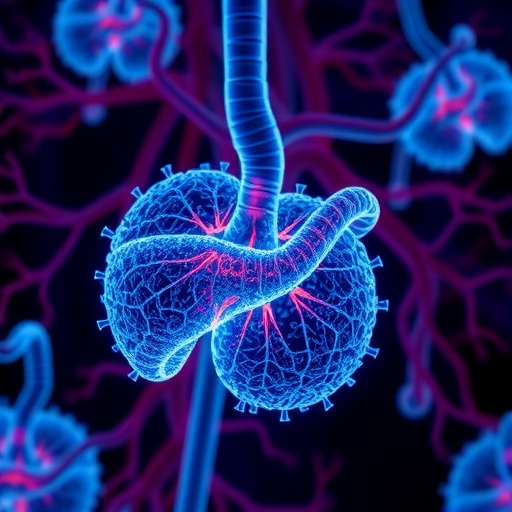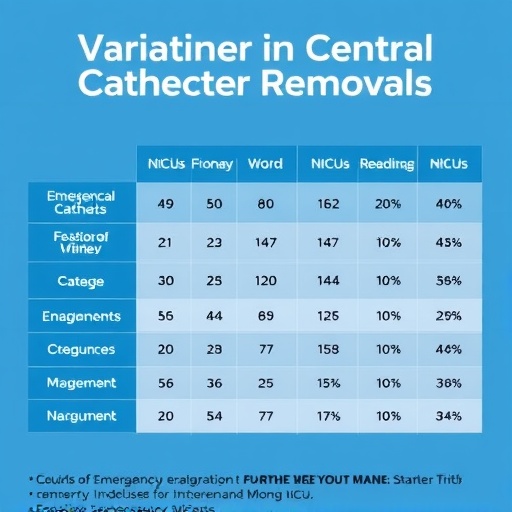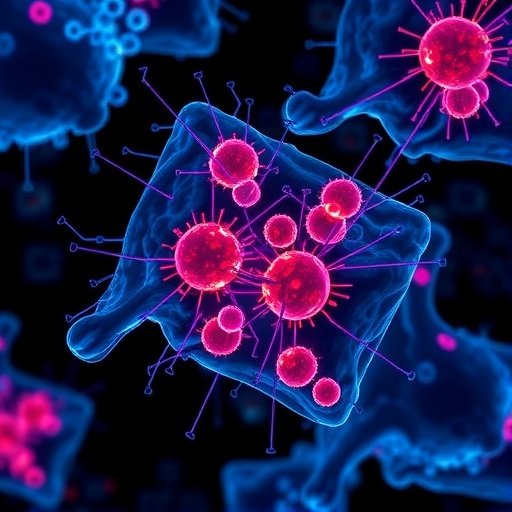A Revolutionary Pathway Unveiled: How mAChR4 Activation Protects Against Alcohol-Associated Liver Disease Through Gut Immune Modulation
Alcohol-use disorder and its devastating complications, notably alcohol-associated liver disease (ALD), have long stood as formidable challenges in global health. ALD not only ranks among the leading causes of liver transplantation but also contributes substantially to mortality worldwide. Despite major advances in understanding liver pathology, the intricate interplay between the gut and liver—termed the gut–liver axis—remains only partially understood, especially regarding the immune mechanisms guarding against bacterial translocation in the gut during chronic alcohol exposure. A pioneering new study published in Nature by Llorente and colleagues unravels a novel molecular circuit implicating the muscarinic acetylcholine receptor M4 (mAChR4) expressed in intestinal goblet cells, placing it at the very heart of antimicrobial defense and ALD prevention.
The gut–liver axis functions as a complex bidirectional communication network, where the integrity of intestinal barriers plays a pivotal role in shielding the liver from harmful microbial incursions originating in the gut. Central to this axis are intestinal goblet cells (GCs), specialized epithelial cells responsible for secreting mucus to protect the intestinal lining. Yet, beyond their canonical function, these goblet cells exhibit an extraordinary immunological role by forming goblet cell-associated antigen passages (GAPs). GAPs act as conduits, enabling luminal antigens to traverse the epithelial barrier and interact with antigen-presenting cells (APCs) residing in the lamina propria, thereby educating and modulating immune responses.
.adsslot_NURx4uzIyK{width:728px !important;height:90px !important;}
@media(max-width:1199px){ .adsslot_NURx4uzIyK{width:468px !important;height:60px !important;}
}
@media(max-width:767px){ .adsslot_NURx4uzIyK{width:320px !important;height:50px !important;}
}
ADVERTISEMENT
This groundbreaking research reveals that chronic alcohol consumption suppresses the expression of mAChR4—the muscarinic acetylcholine receptor subtype critical for activating GAPs—in small intestinal goblet cells of both humans and murine models. Consequent to mAChR4 downregulation, GAP formation is reduced, representing a previously unrecognized mechanism by which alcohol disrupts intestinal immune homeostasis. The diminished GAP-mediated antigen sampling impairs the activation and recruiting of immune cells necessary for maintaining antimicrobial defenses. This disruption facilitates microbial translocation, whereby intestinal bacteria breach the compromised gut barrier, infiltrate the portal circulation, and inflict inflammatory damage upon hepatic tissue.
Remarkably, the study delineates that activation of the interleukin-6 signal transducer (IL6ST, also known as gp130) in the intestine recalibrates this immune dysfunction. Stimulating IL6ST signalling upregulates mAChR4 expression on goblet cells, restores GAP formation, and effectively resurrects the gut’s antimicrobial immunity. This cascade culminates in the induction of type 3 innate lymphoid cells (ILC3s) that produce interleukin-22 (IL-22), a cytokine instrumental in bolstering epithelial defenses and inducing antimicrobial peptides such as regenerating islet-derived protein 3 (REG3). The resulting antimicrobial milieu reinstitutes barrier integrity and curtails the hepatic influx of pathogenic bacteria, thereby conferring resistance to alcohol-induced liver injury.
The elucidation of this mAChR4–IL6ST–ILC3–IL-22 axis transforms our conceptual understanding of ALD pathogenesis and highlights the vital immunological crosstalk within the gut–liver axis. It challenges previous dogma by demonstrating that the prevention of ethanol-induced steatohepatitis is not merely a matter of hepatic cellular resilience but hinges critically on sophisticated immune surveillance orchestrated by gut epithelial and immune cell interactions. By focusing on goblet cells’ ability to sample antigens through GAPs, the study identifies these passages not just as passive structures but as active immunoregulatory interfaces essential for maintaining microbial equilibrium.
The implications of this work reach far beyond the confines of alcohol-related liver disease. The critical role of goblet cell-associated antigen passages in maintaining epithelial and immune homeostasis invites further exploration into their involvement in other gut-associated pathologies characterized by dysbiosis and barrier dysfunction, including inflammatory bowel disease and metabolic disorders. Furthermore, the identification of mAChR4 as a pivotal receptor linking neuronal signals to immune functions underscores the emerging importance of neuroimmune crosstalk in tissue homeostasis.
Technically, the study utilized cutting-edge molecular and cellular biology tools, including cell-type-specific receptor modulation, high-resolution imaging of GAPs, and rigorously controlled animal models of chronic ethanol exposure. Through meticulous correlative analyses between human and mouse samples, the researchers validated the translational significance of their findings. They quantified expression profiles of mAChR4 and IL6ST, measured cytokine landscapes, and assessed bacterial translocation using a battery of microbiological and immunological assays, establishing an airtight causal link between impaired GAP function and liver disease progression.
This elegant synthesis of neuroimmunology, microbiology, and hepatology exemplifies a next-generation approach to dissecting complex organ interactions. It also stresses the indispensable value of intestinal immune surveillance in maintaining systemic health, a concept emphasized by the recognition that microbial translocation acts as a critical driver of chronic inflammation and end-organ damage in ALD. The discovery that GAP induction can be pharmacologically reinstated provides a tangible target for clinical translation, with the potential to reduce the immense burden of alcoholic liver disease worldwide.
In light of these advances, the authors advocate for further exploration of mAChR4 agonists and IL6ST pathway modulators in preclinical and clinical settings. Safety profiles, receptor selectivity, and optimal delivery mechanisms must be investigated to harness these agents effectively. Simultaneously, longitudinal studies elucidating the dynamics of GAP modulation throughout the stages of alcohol exposure and liver injury will be instrumental in refining therapeutic timing and strategies.
This seminal work by Llorente and colleagues not only revolutionizes the mechanistic landscape of ALD pathogenesis but also offers a beacon of hope for millions vulnerable to the devastating consequences of chronic alcohol misuse. By unveiling how gut epithelial immune mechanisms and neuroimmune receptors converge to quell microbial dissemination and subsequent liver inflammation, the study charts a path toward innovative, mechanism-based therapies that address root causes rather than downstream symptoms.
As the scientific community digests these insights, it becomes increasingly clear that bridging the gap between gut health and liver disease is paramount. The identification of mAChR4 as a master regulator at this intersection unlocks new vistas for research and therapeutic development, embodying the power of integrative biology to confront and conquer some of the most pressing medical challenges of our time.
Subject of Research:
Muscarinic acetylcholine receptor M4 (mAChR4) regulation of gut antigen passage formation and its immunological role in preventing alcohol-associated liver disease through modulation of gut–liver axis microbial translocation.
Article Title:
mAChR4 suppresses liver disease via GAP-induced antimicrobial immunity
Article References:
Llorente, C., Raya Tonetti, F., Bruellman, R. et al. mAChR4 suppresses liver disease via GAP-induced antimicrobial immunity. Nature (2025). https://doi.org/10.1038/s41586-025-09395-z
Image Credits:
AI Generated
Tags: alcohol-associated liver diseaseantimicrobial defense mechanismsbacterial translocation preventionchronic alcohol exposure effectsglobal health implicationsgut immune modulationgut-liver axis communicationimmunological role of goblet cellsintestinal goblet cells functionliver health improvementliver transplantation challengesmAChR4 activation





